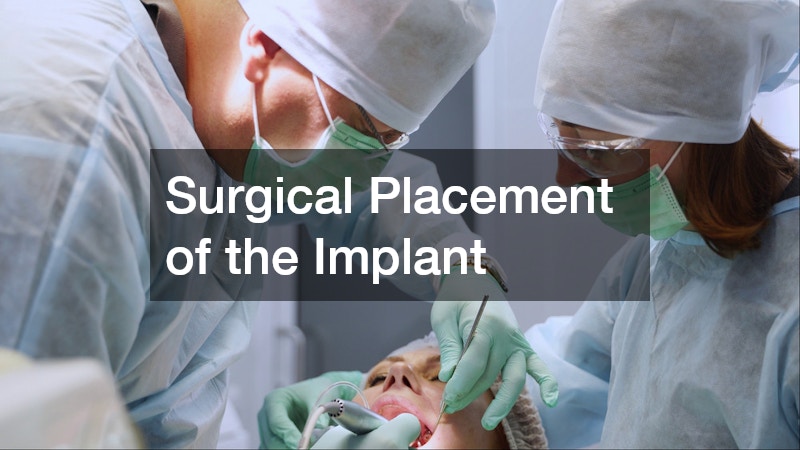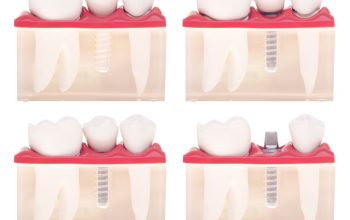

Dental implants have become a popular choice for tooth replacement. This article explores the benefits, process, and recovery associated with dental implants, aiming to provide a comprehensive understanding for those considering this treatment option.
Improved Oral Health
Dental implants play a crucial role in maintaining oral health by preventing bone loss, which is a common consequence of missing teeth. Because implants are fused into the jawbone, they do not affect surrounding teeth, unlike traditional bridges.
This integration helps in preserving the natural structure of the teeth and jaw, promoting long-term oral stability.
One significant advantage of dental implants is their ability to support overall dental health in the long term. By avoiding the need to alter healthy teeth, as is often required with bridges, implants preserve natural teeth. Furthermore, they prevent shifting of adjacent teeth, which can lead to misalignment and additional dental issues.
Enhanced Aesthetics and Comfort
Dental implants offer a level of comfort and natural appearance that is unmatched by dentures. As they are uniquely designed to match the color and shape of existing teeth, they blend seamlessly into the mouth. This natural appearance contributes significantly to boosting the wearer’s confidence and self-esteem.
The comfort of dental implants stems from their secure fit, unlike dentures that can slip or cause irritation. As implants are anchored to the jawbone, patients experience a stable and comfortable feel. This secure placement eliminates discomfort and offers a consistent feeling of natural teeth during eating and speaking.
Durability and Longevity
Durability is a defining benefit of dental implants, making them a worthwhile investment for long-term oral health. When cared for properly, dental implants boast a long lifespan, with many individuals experiencing decades of use without degradation. This longevity means fewer costs associated with replacements or repairs, thus offering a cost-effective solution.
Constructed from biocompatible materials such as titanium, implants resist decay and provide a strong foundation that can withstand daily functions. This resistance contributes to their endurance against wear and tear, unlike other dental replacements that may require frequent adjustments or replacements. With robust structural properties, implants are an ideal option for those seeking reliability and resilience.
Initial Consultation and Assessment
The journey towards receiving dental implants begins with an initial consultation, where a dentist evaluates the patient’s oral health. During this assessment, factors such as the density of the jawbone and the overall health of the gum tissues are inspected to ensure candidacy for the procedure. Advanced imaging technology, such as 3D scans, is often employed to give a comprehensive view of the mouth’s structure.
A crucial component of this phase is discussing the patient’s medical history and any medications or underlying conditions. This discussion allows the dentist to assess potential risks and develop a tailored treatment plan. Such thorough evaluations are essential to predict the success of the dental implant procedure.
Surgical Placement of the Implant
The surgical phase involves placing the implant directly into the jawbone, a procedure that is meticulously planned and executed under local anesthesia. The initial step includes making a small incision in the gum to expose the bone, where a hole is then drilled to securely place the implant. This implant acts as the root of the new tooth, establishing a stable base in the mouth.
Following the placement, the incision is stitched back, and the healing process begins as the implant naturally integrates with the jawbone through osseointegration. This step is critical as it determines the long-term success of the implant, requiring a few months for complete integration. Patients often experience minimal discomfort during recovery, comparable to routine dental procedures.
Attaching the Abutment and Crown
Once the implant has fully integrated with the jawbone, the process continues with the attachment of an abutment, which serves as a connector. The gum is reopened, and the abutment is attached to the implant, allowing it to extend above the gumline. This pivotal component is critical for securing the final crown to the implant structure.
Following the placement of the abutment, a custom-made dental crown is fabricated to match the size, shape, and color of natural teeth. This step ensures the implant’s appearance is indistinguishable from neighboring teeth, enhancing the visual appeal. Once the crown is attached, the implant process is essentially complete, restoring function and beauty to the smile.
Long-term Maintenance and Care
For maintaining the health of dental implants and surrounding tissues, committing to a robust oral hygiene routine is essential. Regular brushing and flossing keep the area free from plaque buildup and preserve gum health. Additionally, routine dental cleanings and examinations are necessary to monitor the integrity of the implant and natural teeth.
Dental implants provide numerous benefits, from improved oral health to enhanced aesthetics. Understanding the process and recovery involved helps individuals make informed decisions regarding their dental health. Always consult with a dental professional to determine the best options for your unique needs.




